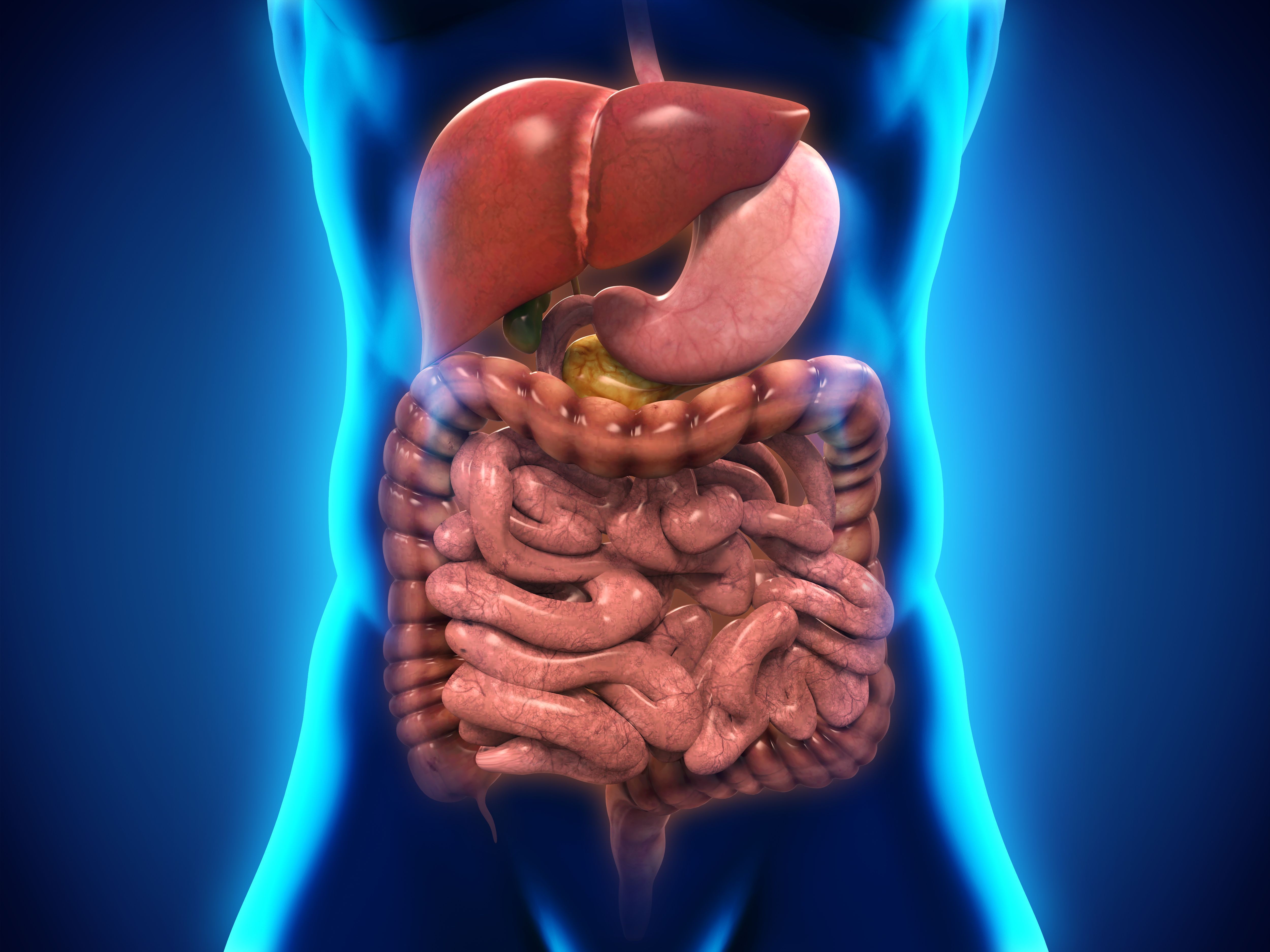T-DXd Emerges as New Standard of Care for Second-Line HER2+ Gastric/GEJ Cancer
T-DXd improved OS, PFS, ORR, and DOR vs ramucirumab plus paclitaxel in the second-line treatment of HER2-positive gastric cancer or gastroesophageal junction adenocarcinoma.
Trastuzumab deruxtecan elicited a median overall survival of 14.7 months vs 11.4 months with ramucirumab plus paclitaxel in patients with gastric cancer.

Fam-trastuzumab deruxtecan-nxki (T-DXd; Enhertu) demonstrated a clinically meaningful and statistically significant improvement in overall survival (OS) vs ramucirumab (Cyramza) plus paclitaxel in the second-line treatment of patients with HER2-positive, unresectable or metastatic gastric cancer or gastroesophageal junction adenocarcinoma (GC/GEJ), according to results from the phase 3 DESTINY-Gastric04 trial (NCT04704934) presented during a news briefing for the 2025 American Society of Clinical Oncology Annual Meeting.1
Results were simultaneously published in the New England Journal of Medicine.2 At a median follow-up of 16.8 months for T-DXd and 14.4 months for ramucirumab plus paclitaxel, the median OS was 14.7 months (95% CI, 12.1-16.6) vs 11.4 months (95% CI, 9.9-15.5), respectively, with a 30% reduction in risk of death (HR, 0.70; 95% CI, 0.55-0.90; P = .0044). The 6-month OS rates were 83.5% vs 74.4%, the 12-month OS rates were 57.6% vs 48.9%, and the 24-month OS rates were 29.0% vs 13.9%, respectively.
The median progression-free survival (PFS) with T-DXd was 6.7 months (95% CI, 5.6-7.1) vs 5.6 months (95% CI, 4.9-5.8) with ramucirumab plus paclitaxel (HR, 0.74; 95% CI, 0.59-0.92; P = .0074).2 The 6-month PFS rate was 52.6% vs 41.5%, and the 12-month PFS rate was 22.9% vs 13.6%, respectively.
The confirmed overall response rate (ORR) was 44.3% (95% CI, 37.8%-50.9%) in patients who received T-DXd and 29.1% (95% CI, 23.4%-35.3%) in patients who received ramucirumab plus paclitaxel (P = .0006); the difference was 15.1% (95% CI, 6.1%-24.2%). The duration of response (DOR) was 7.4 months (95% CI, 5.7-10.1) vs 5.3 months (95% CI, 4.1-5.7), respectively. At 6 months, the DOR rate was 58.4% vs 35.7%, respectively, and at 12 months, it was 29.7% vs 15.0%.
The disease control rate (DCR) was 91.9% (95% CI, 87.7%-95.1%) with T-DXd; 3.0% of patients (n = 7) achieved a complete response (CR), 41.3% (n = 97) achieved a partial response (PR), 47.7% (n = 112) achieved stable disease (SD), 5.5% (n = 13) had progressive disease (PD), and 2.6% (n = 6) were not evaluable. In patients who received ramucirumab plus paclitaxel, the DCR was 75.9% (95% CI, 70.0%-81.2%); 1.3% of patients (n = 3) achieved a CR, 27.8% (n = 66) achieved a PR, 46.8% (n = 111) achieved SD, 9.3% (n = 22) had progressive disease, and 14.8% (n = 35) were not evaluable.
“T-DXd demonstrated a statistically significant and clinically meaningful improvement in OS compared with [ramucirumab plus paclitaxel] in patients with HER2-positive metastatic GC/GEJ in the second-line setting,” stated presenting study author Kohei Shitara, MD, director of the Department of Gastrointestinal Oncology at the National Cancer Center Hospital East in Kashiwa, Japan, in the presentation.1 “DESTINY-Gastric04 confirmed T-DXd as the global [second line] standard-of-care therapy for patients with HER2-positive metastatic GC/GEJ.”
DESTINY-Gastric04 was a global, multicenter trial that randomly assigned approximately 494 patients 1:1 to receive 6.4 mg/kg of intravenous T-DXd once every 3 weeks (n = 246) or intravenous ramucirumab at 8 mg/kg on days 1 and 15 of each 28-day cycle and paclitaxel at 80 mg/m2 on days 1, 8, and 15 of each 28-day cycle (n = 248).
Eligible patients had HER2-positive GC/GEJ with HER2 status confirmed locally or centrally on a biopsy obtained after progression on trastuzumab (Herceptin). Patients also had no clinically active central nervous system metastases.
Exclusion criteria included a history of noninfectious interstitial lung disease or pneumonitis that was treated with glucocorticoids, active interstitial lung disease or pneumonitis, or suspected of having interstitial lung disease or pneumonitis that could not be ruled out by imaging.2
The trial’s primary end point was OS. Key secondary end points included PFS per investigator assessment, confirmed ORR per investigator assessment, DOR per investigator assessment, and safety.
Drug-related treatment-emergent adverse events (TEAEs) of any grade affected 93.0% (n = 227/244 patients) of patients who received T-DXd and 91.4% (n = 213/233 patients) of patients who received ramucirumab plus paclitaxel; drug-related TEAEs of grade 3 or higher affected 50.0% and 54.1% of patients, respectively. The most common drug-related AEs that were grade 3 or higher for T-DXd vs ramucirumab included neutropenia (28.7% vs 35.6%), anemia (13.9% vs 13.7%), and leukopenia (7.4% vs 12.4%).
It was also noted that interstitial lung disease/pneumonitis occurred in 13.9% of patients who received T-DXd and 1.3% who received ramucirumab plus paclitaxel.
Drug-related TEAEs were associated with dose discontinuation, dose interruption, dose reduction, and death, respectively, in 11.5%, 38.5%, 31.1%, and 1.6% of patients who received T-DXd, and in 13.3%, 51.1%, 36.1%, and 0.9%, respectively, in patients who received ramucirumab plus paclitaxel.
“These results warrant further evaluation of T-DXd in the context of first-line therapy,” the authors of the study wrote.2
References
- Shitara K, Gumus M, Pietrantonio F, et al. Trastuzumab deruxtecan (T-DXd) vs ramucirumab (RAM) + paclitaxel (PTX) in second-line treatment of patients (pts) with human epidermal growth factor receptor 2-positive (HER2+) unresectable/metastatic gastric cancer (GC) or gastroesophageal junction adenocarcinoma (GEJA): primary analysis of the randomized, phase 3 DESTINY-Gastric04 study. Presented at: 2025 American Society of Clinical Oncology Annual Meeting; May 30-June 3, 2025. Chicago, IL. Abstract 4002.
- Shitara K, Van Cutsem E, Gümüş M, et al. Trastuzumab deruxtecan or ramucirumab plus paclitaxel in gastric cancer. N Engl J Med. Published online May 31, 2025. doi:10.1056/NEJMoa2503119